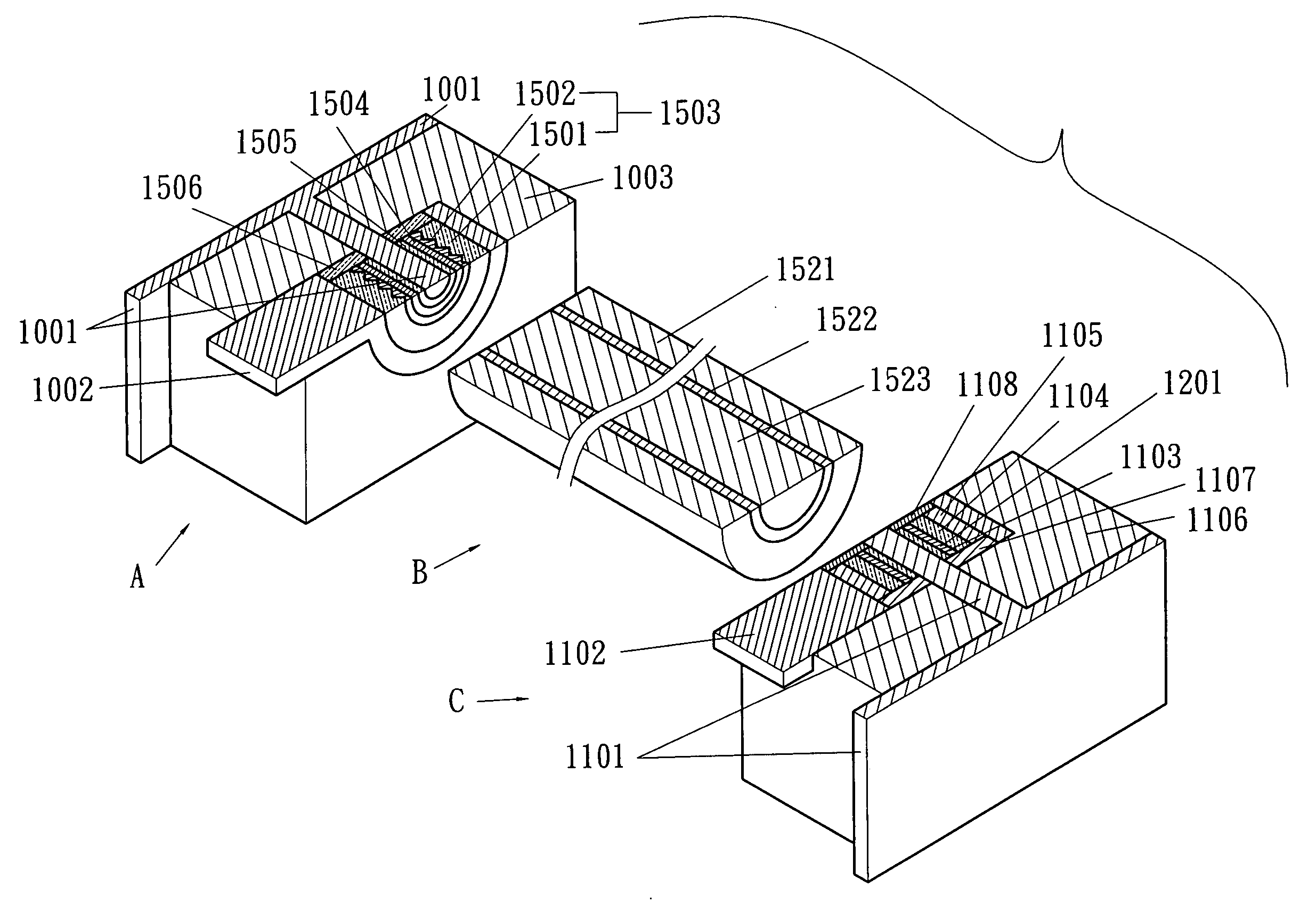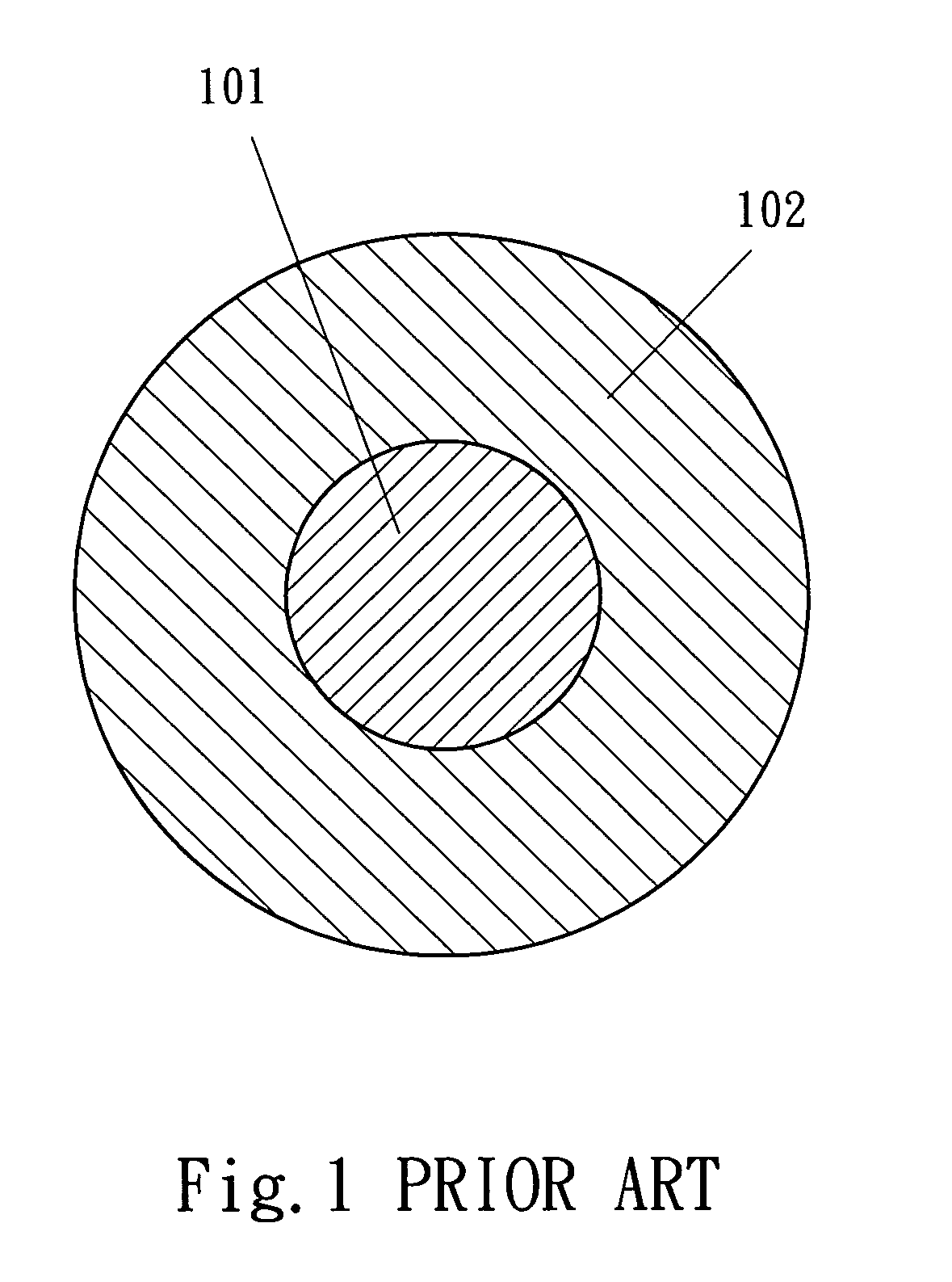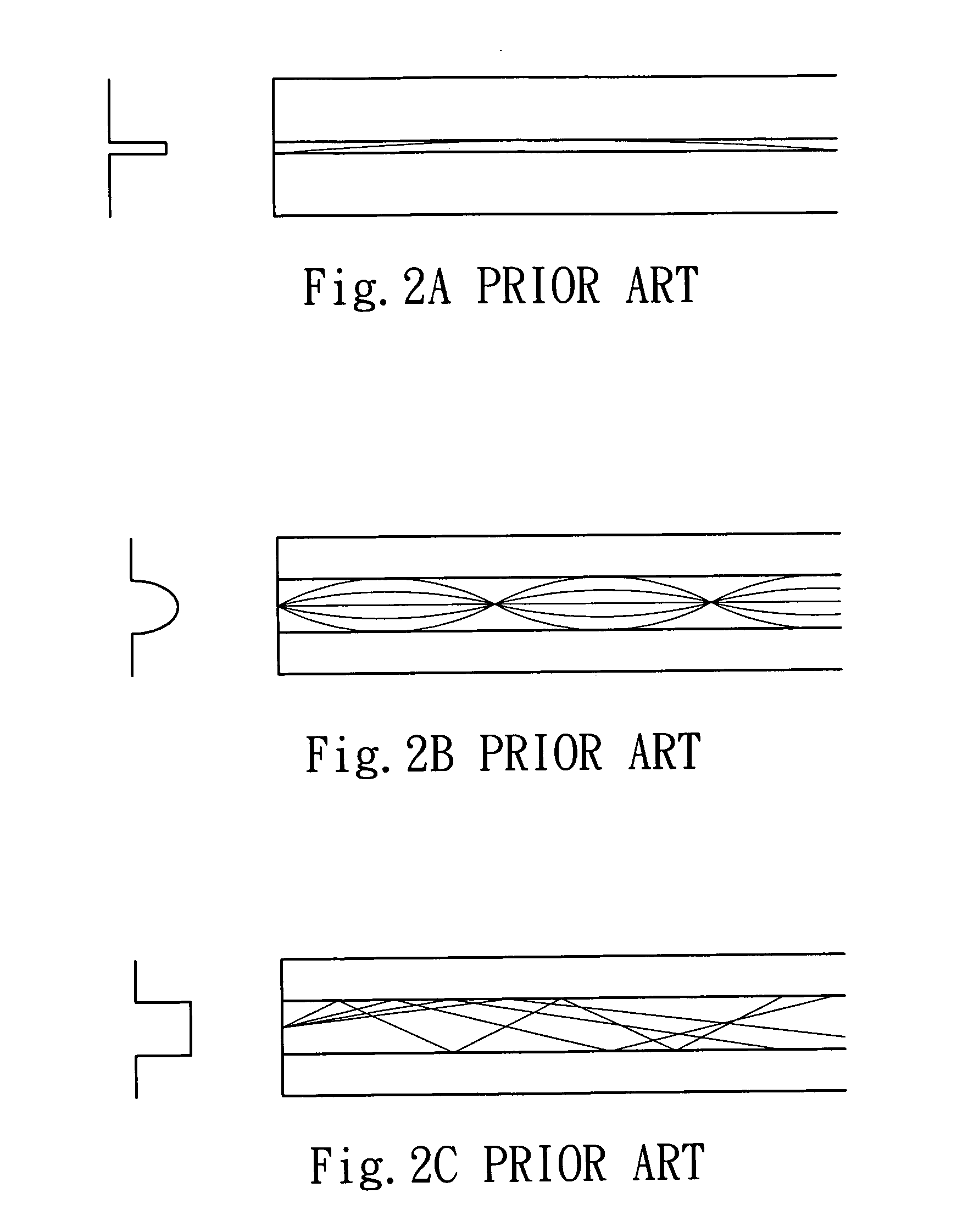Coaxial light-guide system consisting of coaxial light-guide fiber basing its refractive index profiles on radii and with its coaxial both semiconductor light sources and semiconductor detectors
a light-guide fiber and coaxial technology, applied in the field of communication optical fiber, to achieve the effect of reducing transmission loss, saving collapse process cost, and increasing bandwidth
- Summary
- Abstract
- Description
- Claims
- Application Information
AI Technical Summary
Benefits of technology
Problems solved by technology
Method used
Image
Examples
embodiment 1
[0086]An optical fiber system consisting of a coaxial optical fiber, a coaxial light source and a coaxial photodiode that is coupled with a transceiver end is illustrated in FIG. 15. The numerals that are same as the ones of previous discussion are deemed to provide same or similar functions. The drawings are merely a simplified means to elaborate the features of the invention, and do not intend to cover all the details of actual practice nor present by actual dimensional scale. However they reflect the basic coaxial light guide principle the invention adopts.
[0087]In FIG. 15 the light source A is a coaxial semiconductor laser. It is a coaxial DFB heterostructure Distributed Feedback Bragg's laser diode shown in a fragmentary sectional view. Its structure adopts a prior planar DFB heterostructure Distributed Feedback Bragg's laser diode to coincide with natural law which the present invention intends to establish. More specifically, the DFB heterostructure laser includes a conductiv...
embodiment 2
[0097]Refer to FIG. 16 for a second embodiment of the coaxial light guide system. It is an application example co-constructed with a coaxial semiconductor transceiver on a same substrate 1602 to share a single coaxial optical fiber 801 to save another optical fiber. The prior transceiver of optical fiber has the light emitter and the photodiode which receive optical signals fabricated separately, then coupled together. As the optical fiber can transmit optical wave in both directions, in the invention with the coaxial semiconductor light transceiver co-constructed on the same substrate a lot of hardware cost can be saved. Because all of three coaxial structures are co-constructed, they can be easy stacked in an up and down manner to form various types of combinations for different applications. The transceiver has an APD photodiode at an upper layer, 1103 is a n+ semiconductor layer, 1202 is a p-type multiplication layer, 1104 is an InP intrinsic semiconductor, 1105 is a p-type semi...
PUM
 Login to View More
Login to View More Abstract
Description
Claims
Application Information
 Login to View More
Login to View More - R&D
- Intellectual Property
- Life Sciences
- Materials
- Tech Scout
- Unparalleled Data Quality
- Higher Quality Content
- 60% Fewer Hallucinations
Browse by: Latest US Patents, China's latest patents, Technical Efficacy Thesaurus, Application Domain, Technology Topic, Popular Technical Reports.
© 2025 PatSnap. All rights reserved.Legal|Privacy policy|Modern Slavery Act Transparency Statement|Sitemap|About US| Contact US: help@patsnap.com



